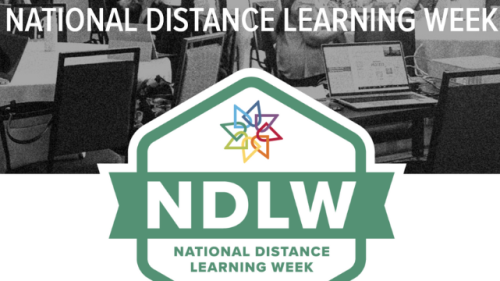Even if you’re thinking about enrolling in a GIS program and pursuing a GIS master’s degree, you may not realize how prevalent Geographic Information Science (GIScience) is in our world. It is the science behind the devices that are woven into our daily lives. Geographical Information Systems (GIS) are everywhere, from the mapping applications on our phones to systems that monitor our health, manage communications networks, plan disaster response and study environmental sustainability.1
Keep reading to learn about geographic information science, the difference between GIScience and GIS, and what you can do with a master’s degree in GIScience.
What is Geographic Information Science?
Geographic Information Science, also known as GIScience or GISc, is the scientific study of the methods and techniques used to research, process and analyze geographic or spatial data. This information forms the foundation for GIS, which are the software tools that are used to better understand ourselves and our world.2
In this field, scientists study geographic concepts and how they function within GIS applications. They also investigate the impact of these systems on individuals and society.2 GISc research incorporates and plays an important role in the diverse fields of geography, computer science, mathematics, engineering, geostatistics, psychology, cognitive science and social science.3
How is GIScience Different from Geographic Information Systems?
While GIS focuses on the hardware and software that captures, manipulates and represents geographic information, GIScience examines the conceptual ideas behind the systems—it is the foundation upon which these systems are built and operated. Geographic Information Systems look at the “what” and the “where” (the tools and procedures), while GIScience also delves into how this technology works and the science behind it. 3
What is Meant by Geospatial Technology?
When researching the field of GIScience and career opportunities, you will likely come across the term geospatial. In the realm of GISc, geospatial technologies encompass remote sensing, GIS, global positioning systems (GPS) and internet mapping technologies. Starting with mapmaking and cartography, then aerial photography and aircraft, imagery of the Earth is now accomplished with satellites, computers, digital software, maps and data that displays environmental and socioeconomic phenomena—collectively referred to as GIS.4
Geospatial data is assembled by the software into a set of layered maps, allowing scientists to analyze and communicate this information to a wider audience. The layering is possible because all the data has information that pinpoints its exact location on the Earth’s surface, and therefore, it’s referred to as ‘geospatial.’4
What is a GIS Master’s Degree?
A GIS master’s degree will provide you with the basic skills and tools you need to get started in a GIS-related field. These programs tend to be very practical, teaching you the GIS tools and methods that can be directly applied to a GIS job. However, the courses may not go as deep into the background science as a GISc master’s degree program.
Qualifications
A master’s degree in geographic information systems will likely have fewer requirements than a GISc master’s degree. Applicants usually must have a bachelor’s degree in a related field and a GPA of at least 3.0 for admission. They may also require an upper-level class or at least an undergraduate course in GIS technology, or a year of related work experience.
Curriculum
Courses in a GIS master’s degree program may include systems programming, GIS concepts, remote sensing technologies, geospatial programming, spatial analysis, and geographical information and database systems.
What is a GISc Master’s Degree?
GIScience is a wider umbrella of knowledge that includes GIS and geospatial technologies (i.e., remote sensing, mapping). A GISc master’s degree encompasses the entire field of geographic information science, and the programs feature a multi-disciplinary approach. A GISc master’s program is appropriate for scientists who wish to immerse themselves in the field, possibly for a higher-level research position. You’ll find courses in the nuts and bolts of GIS—programming, cartography, data architecture—but you’ll also be studying in fields such as global health and social and behavioral science.
Qualifications
Typically, those who apply for a GISc master’s degree will have a bachelor’s degree in either geography or a related field, though some schools don’t require this. Depending on the institution, they may require that you have taken an upper-level course in geospatial technologies or worked for at least a year in an occupation that uses this technology. Some colleges also require prerequisite classes such as calculus, statistics, physics, engineering science or a programming language. GRE general test scores may or may not be needed.
Curriculum
Courses in a GISc master’s degree program can differ between universities, but they generally focus on remote sensing, GIS, cartography, algorithms and programming, data architecture and data science, spatial programming and analysis, and geodatabases. There may also be specialty GIS topics that relate to specific industries, such as public health, urban development, social and behavioral science, or the environment.
What Can You Do with a Master’s in Geographic Information Science?
With a GISc master’s degree and a strong vision, there is no limit to what you can achieve in this exploding industry. According to a report by Research and Markets, the global geospatial industry is projected to grow at a compound annual growth rate (CAGR) of 13.2% by 2024, from $239.1 billion in 2019 to more than $500 billion in 2024, with North America as the largest market.5
Searching the online job sites for GIS and geospatial opportunities yields a wide variety of careers with private companies, the public sector and non-profit organizations.
The following is a selection of GIS-related job titles, descriptions and median annual salaries:
Geoscientists research and investigate physical aspects of the planet. $93,5806
Geographers study the Earth’s distribution of land, features and inhabitants. $85,4307
Cartographers and Photogrammetrists collect, measure and interpret geographic information to create and update maps and charts for education, planning and other purposes. $68,3808
Surveying and Mapping Technicians collect data to create maps of the Earth’s surface. $46,2009
Conservation Scientists and Foresters manage land quality of parks, forests and other natural resources, often using remote sensing and GIS data. $64,01010
Urban and Regional Planners develop land use programs to support communities, accommodate population growth and revitalize facilities. $75,95011
Surveyors take precise measurements to determine a property’s boundaries. $65,59012
Whether you enjoy working outdoors or prefer to analyze data and solve puzzles at a computer, you have many opportunities to choose from when pursuing a GISc career.
Discover the Kent State Online GISc Master’s Degree
Kent State’s online Master of Geographic Information Science program (MGISc) was created for students interested in a graduate education and working professionals who wish to further their careers. You’ll learn from dedicated, full-time faculty who are committed to helping you succeed. The comprehensive curriculum will prepare you for this exciting yet highly competitive field. You will develop knowledge and skills that take you well beyond simply understanding how to use GIS software.
Courses range from advanced GIS concepts and cartographic design to remote sensing. There are also electives in algorithms and programming, biostatistics in public health, data architecture, urban and economic applications of GIS, spatiotemporal analytics, geodatabases, social and behavioral science and more.
Kent State University’s GISc online master’s program provides the convenience working professionals need, with small class sizes for personalized learning. Graduate in as few as two years, with no GRE requirement for program admission.
Discover the Kent State difference today. Expand your career possibilities and be part of the bold future of geospatial technology.
Sources:
- Retrieved on May 20, 2021 from esri.com/en-us/what-is-gis/overview
- Retrieved on May 20, 2021 from techopedia.com/definition/1932/geographic-information-science-gisci
- Retrieved on May 20, 2021 from gisgeography.com/giscience-geographic-information-science/
- Retrieved on May 20, 2021 from aaas.org/programs/scientific-responsibility-human-rights-law/overview-geospatial-project
- Retrieved on May 20, 2021 from researchandmarkets.com/reports/4816700/geospatial-solutions-market-by-technology-earth
- Retrieved on May 20, 2021 from www.bls.gov/ooh/life-physical-and-social-science/geoscientists.htm
- Retrieved on May 20, 2021 from www.bls.gov/ooh/life-physical-and-social-science/geographers.htm
- Retrieved on May 20, 2021 from www.bls.gov/ooh/architecture-and-engineering/cartographers-and-photogrammetrists.htm
- Retrieved on May 20, 2021 from www.bls.gov/ooh/architecture-and-engineering/surveying-and-mapping-technicians.htm
- Retrieved on May 20, 2021 from www.bls.gov/ooh/life-physical-and-social-science/conservation-scientists.htm
- Retrieved on May 20, 2021 from www.bls.gov/ooh/life-physical-and-social-science/urban-and-regional-planners.htm
- Retrieved on May 20, 2021 from www.bls.gov/ooh/architecture-and-engineering/surveyors.htm






